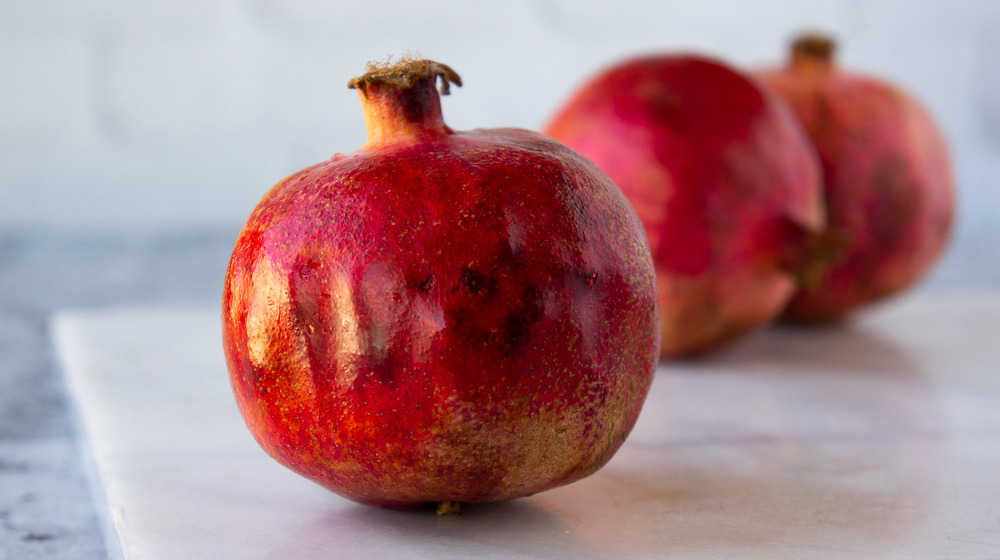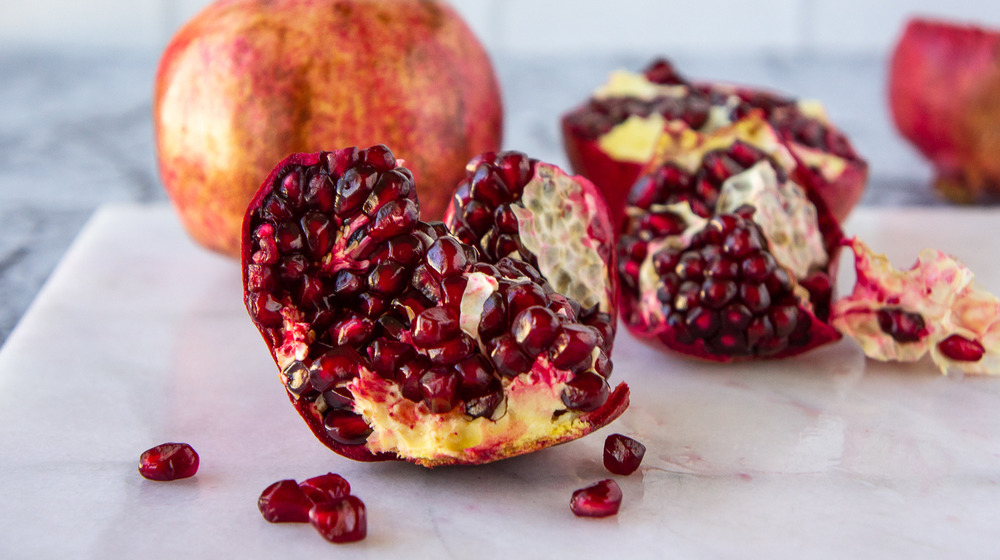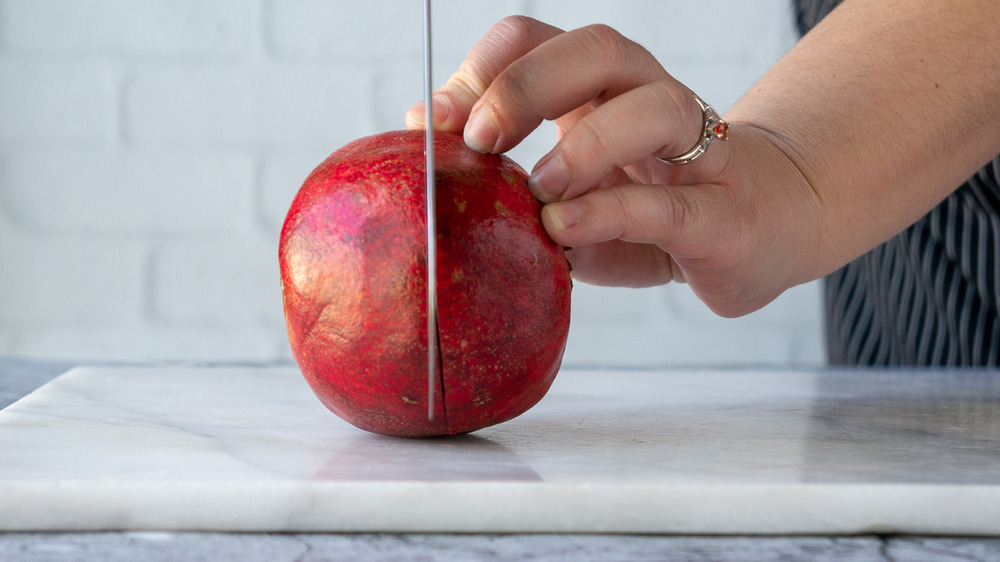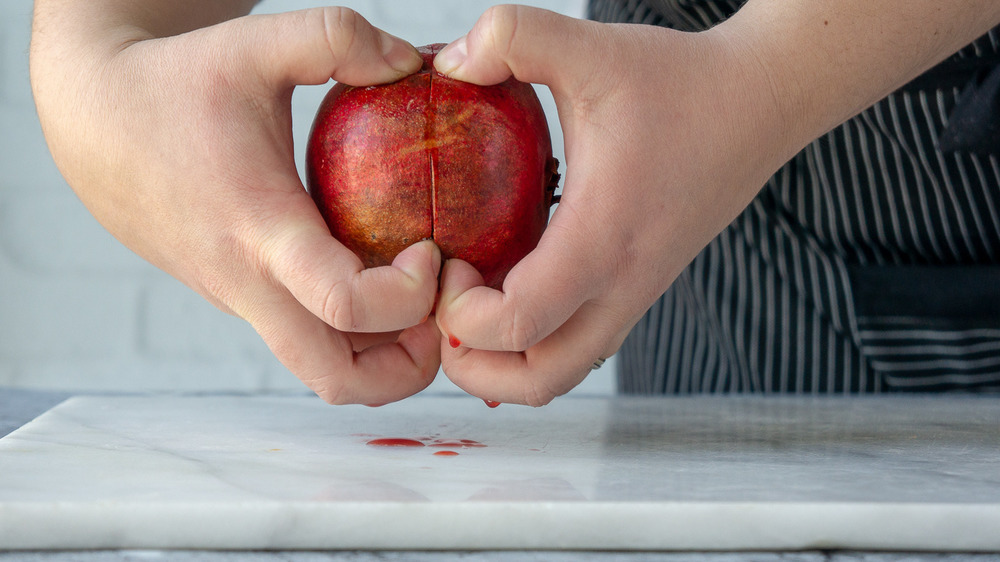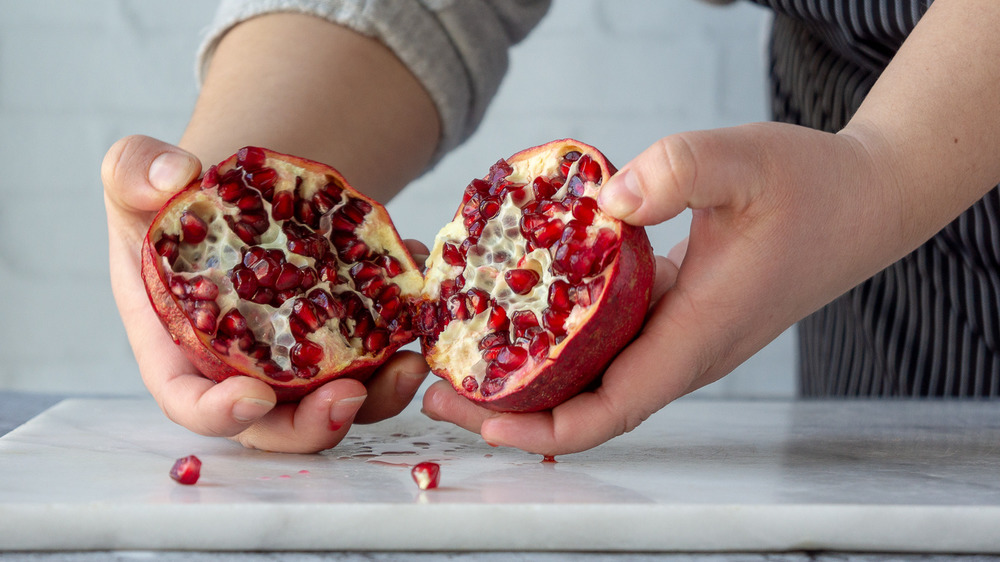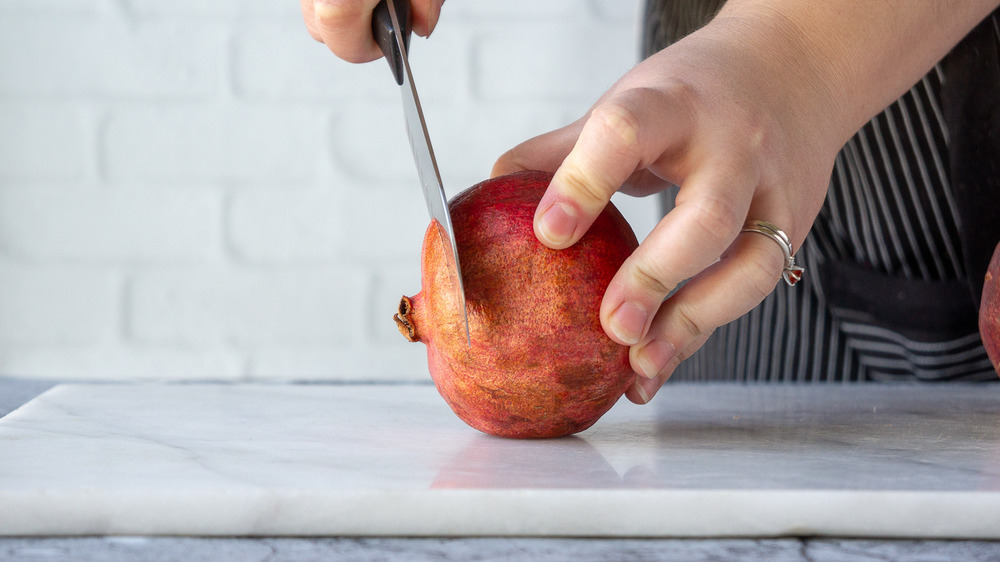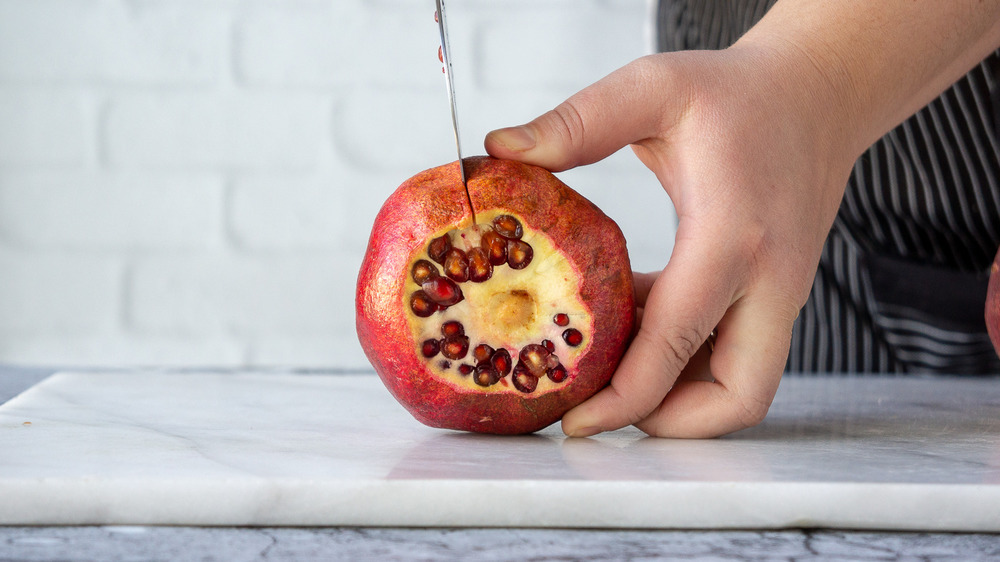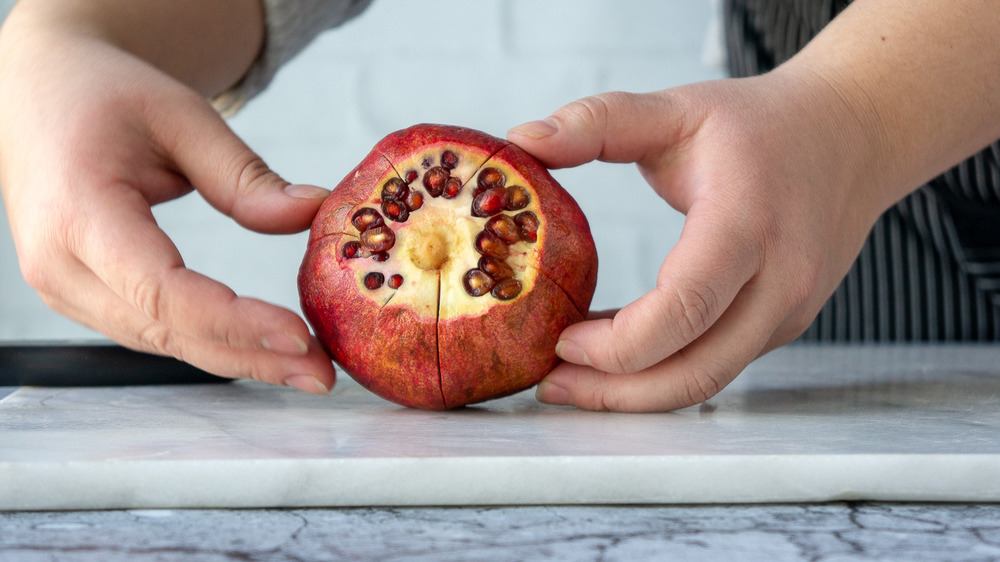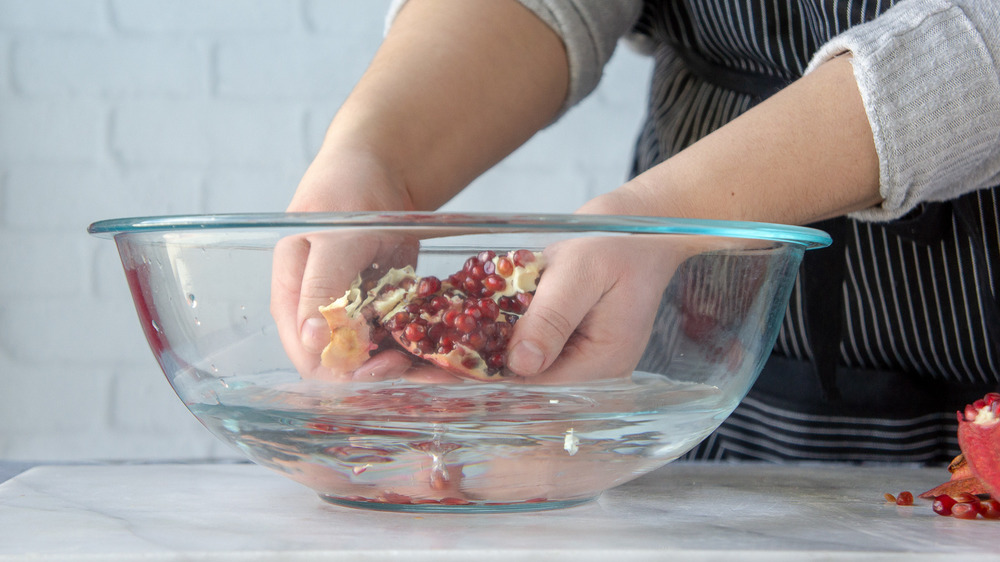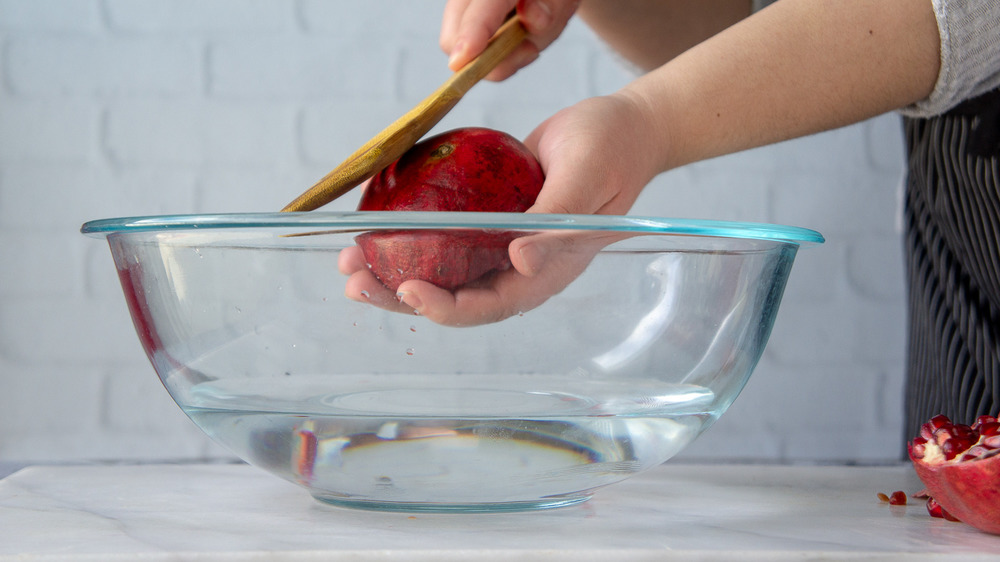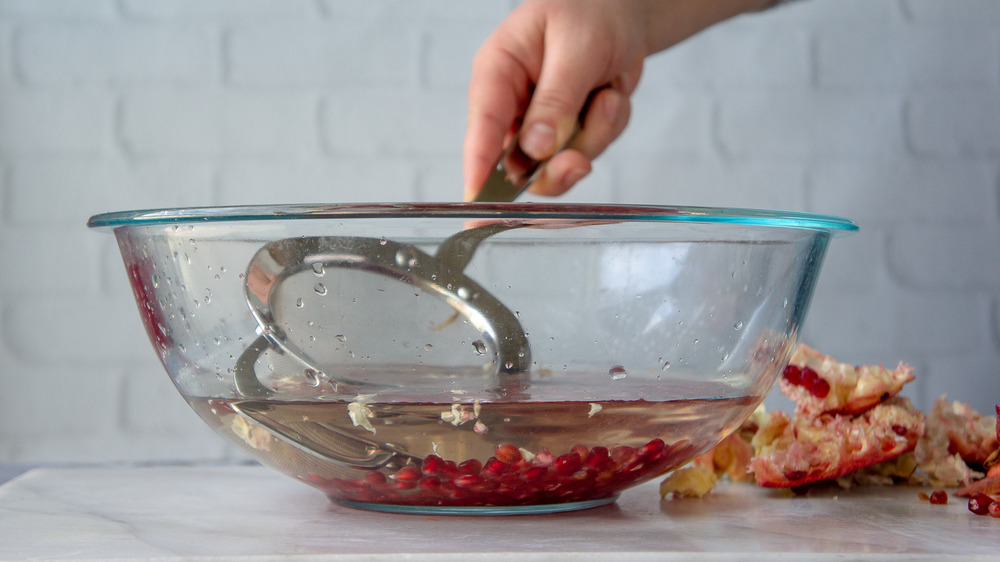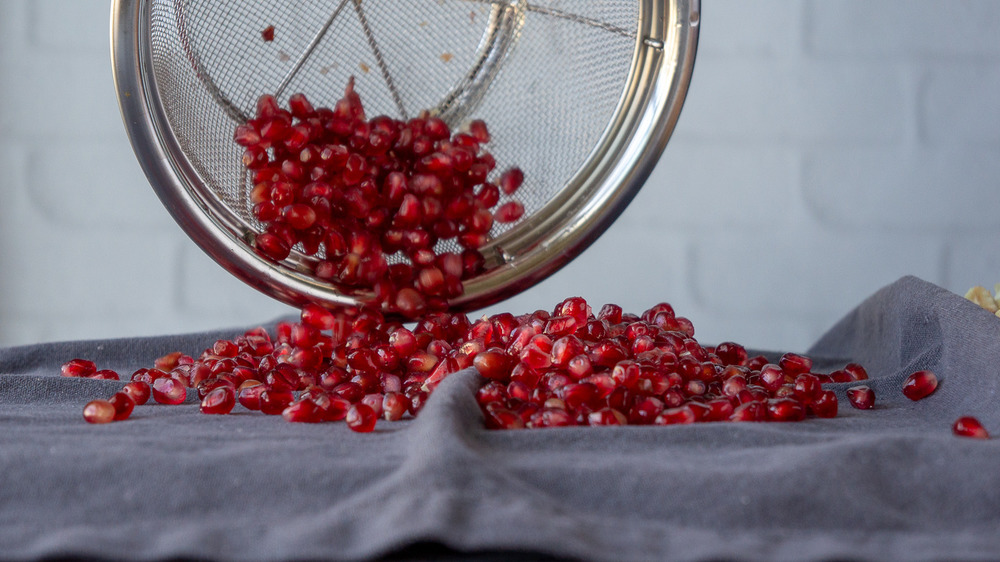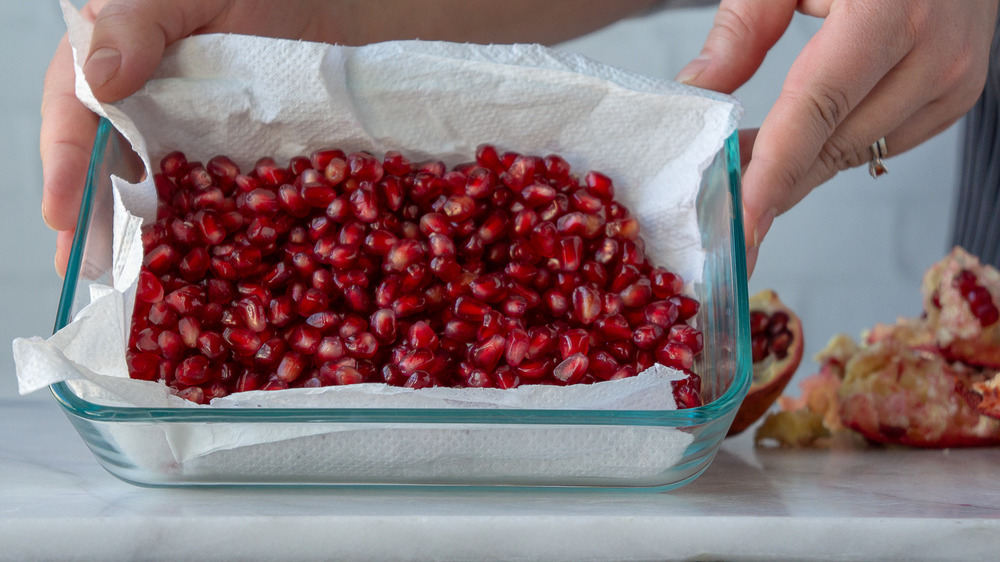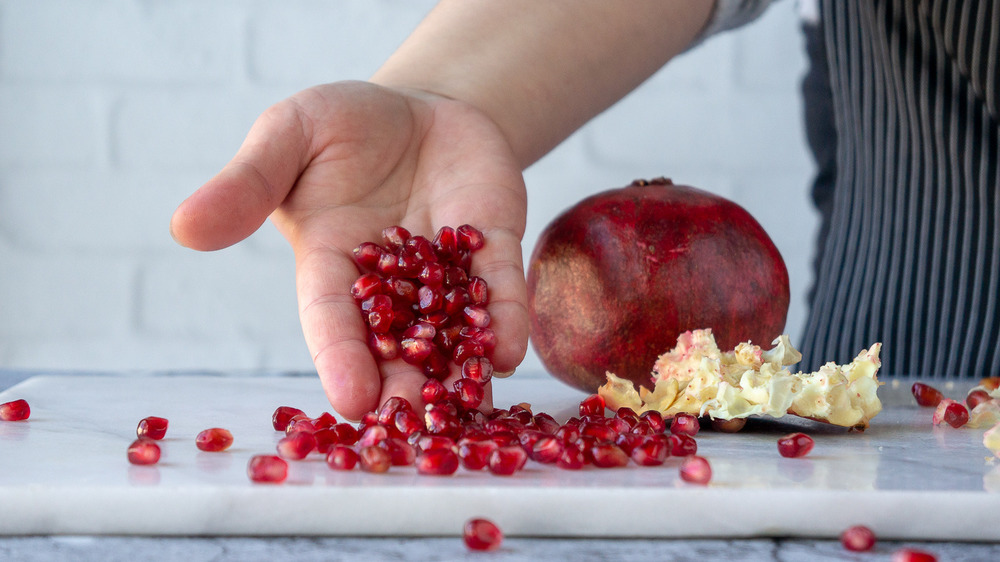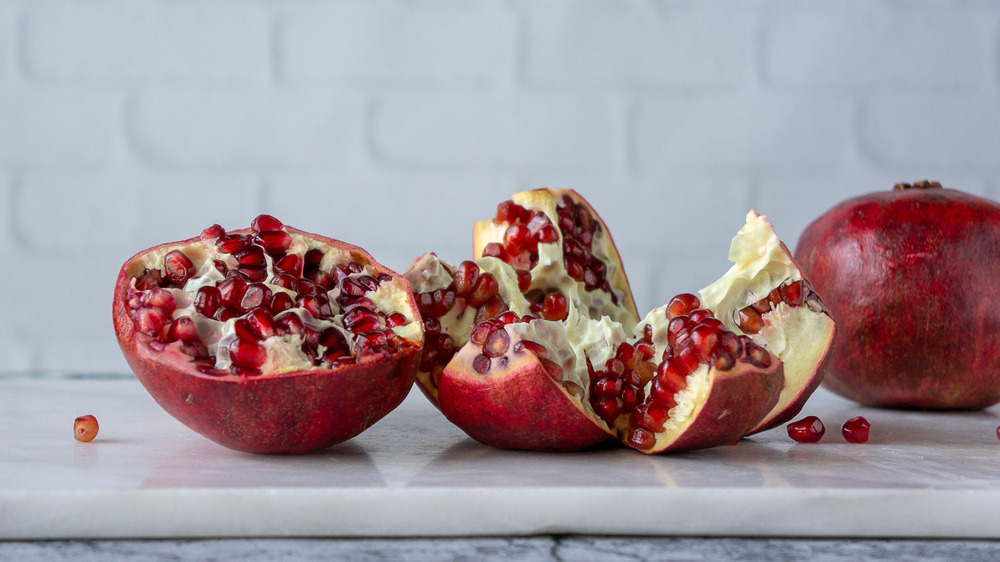How To Cut A Pomegranate
During the fall and winter months, from October to about February, it's hard to miss the piles of red pomegranates that appear everywhere. They're an odd looking fruit with an often discolored and marred, red leathery skin that's tough and dry. The inside of a pomegranate however, promises hundreds of surprisingly nutritious ruby colored arils that deliver a delicious, tart, and sweet juicy crunch with every mouthful.
The trick to enjoying a pomegranate is knowing how to cut and seed them — and it's not as tricky as you probably thought. We'll show you two ways to open your pomegranates, and give you all of our tips for successful seeding and storing. With this handy guide from cooking expert Mikayla Marin of The Flour Handprint, you'll be slicing and seeding pomegranates like a pro, and be on your way to sprinkling handfuls of juicy pomegranate arils on the top of many of your favorite foods.
How to know what parts of the pomegranate to eat, and what to toss
Pomegranates are a bit backwards, compared to other fruit. Instead of eating everything but the seeds, we actually discard everything else and only eat the pomegranate seeds. Actually, in truth, while the juicy red arils are commonly referred to as seeds, the seed is technically the crunchy white bit encased in the juicy red sack called an aril.
Both the seed and the juice are perfectly edible, and provide flavor and texture to recipes. The seeds are not only safe, but add a healthy fiber to the already nutritious juice surrounding it, which is full of antioxidants and vitamin C.
As for the rest of the pomegranate, it's best to toss it into the garbage or your compost bin.
The one cut method for opening a pomegranate
The simplest and most direct method for opening your pomegranate requires only one cut. It gets the job done and in our opinion, leaves you with pomegranate pieces that are the easiest to seed.
Both this and the second method will likely cause some splashing pomegranate juice. To avoid staining we recommend you don an apron or an old shirt and have some damp towels at the ready.
To begin, simply use a sharp knife to make one cut around the middle of the pomegranate, at the thickest point. Try to avoid cutting deeply, only slicing the skin if possible.
Tear open the pomegranate
Once your cut is made, gently work your fingertips into the slice. You should feel the pomegranate rip and give a little at the cut. It's likely seeds will burst, that's very normal.
Get ready for splatter
Once you have a firm hold on the two halves of the pomegranate, go ahead and give it a little muscle. Tear! The pomegranate halves should give way at the seam, leaving you with two beautiful pieces to seed.
Quickly wipe up any splattered juice to avoid staining.
The second, possibly less messy way to cut a pomegranate
Easy right? So is this is the second, generally considered 'cleaner,' method for opening a pomegranate.
You can use a gentler pressure with this method, but we still encountered some juice spills, so keep those towels at the ready.
Start by slicing off the very top of the pomegranate, making your cut just where the pomegranate begins to slope outward. Don't worry too much about cutting through some seeds.
Prepare the pomegranate for splitting
The slice will expose the top of the pomegranate and a few ribs that run along the sides. Sometimes these are easy to see, but they occasionally are hard to identify. Simply make your slices from top to bottom where the white membrane appears thickest. Try not to pierce any deeper than the skin to avoid damaging the arils.
Orange-like wedges for natural separation
Make four to five cuts, so the pomegranate is divided into wedges much like an orange.
Open the pomegranate like a blooming flower
Grip the pomegranate with your thumbs pressed against the top center point where you made your first slice and apply pressure, ripping it apart like an orange.
It'll open like a beautiful red jeweled flower, ready to seed. Again, wipe up any splatter quickly to keep your surfaces from staining.
A bowl of water makes seeding a pomegranate breeze
Once your pomegranate is in wedges or halves, the easiest method for either type of cut is to simply hold a piece over a large bowl filled about halfway with clean, cool water. Simply flake the seeds off with your fingers into the water.
Use a little muscle to remove the pomegranate seeds
While the easiest way is to just work the seeds away from the skin with your fingers, it does take time. There is a faster method you can use to seed pomegranates, but only if you make the single cut to create halves.
Simply hold the pomegranate half loosely over your palm above the water. Use a sturdy wooden spoon to smack the back of the pomegranate firmly, gently spinning and squeezing the pomegranate as you do. The seeds will begin to fall out.
With enough force, the pomegranate will be free of seeds in just a few minutes, but be warned that this can be messy and will likely damage some seeds.
Strain away the floating pieces of pomegranate discard
The water acts like a natural filter for the clinging bits of white that like to stick to the arils. As the seeds sink to the bottom, the white will float to the top. You can use your fingers to gently agitate the seeds to encourage them to float up. Then use your fingers, or a spider strainer or small skimmer, to remove all the white from the bowl.
Give the pomegranate seeds a final rinse
Once you've skimmed off the white bits, give the arils a quick rinse in a strainer then a gentle pat dry. While you do this manually remove any lingering bits of white or damaged arils you see.
Store the pomegranate seeds in an airtight container
Once your seeds are dried of excess water, store them in an airtight container in the fridge for up to five days. We like to line the container with a piece of paper towel to absorb any excess moisture that can lead to spoiling.
If you're planning to keep the pomegranate seeds for longer than five days, store them in the freezer for up to three months instead.
There are many ways to enjoy pomegranate
Once you have the bowl of arils in your fridge, aside from snacking on them, there are tons of ways to use them. The pomegranate arils make a great, crunchy, flavorful topping for soups, salads, and desserts. They're also very easy to juice, to enjoy in smoothies, sauces, or as a base for homemade jelly.
How to cut a pomegranate directions
Time: 15 minutes
Tools:
-
1 pomegranate
-
sharp knife
-
cutting board
-
large bowl
-
Cool water
-
Damp towel
Instructions:
-
To try the easier method of cutting a pomegranate, use the tip of your knife to slice through the skin around the widest part of the pomegranate.
-
Work your fingers into the slice and rip the pomegranate open at the seam. Wipe up any spills with a towel
-
Either flake the arils off into the large bowl half full with cool water, or hold in your palm gently and smack the back of each half with a spoon to release the seeds into the water.
-
To try the less messy way to cut a pomegranate, slice the top off of the pomegranate where it begins to just slope out.
-
Find the thickest points of white around the outer edge of the exposed top of the pomegranate. Make four to five slices at the thickest points of white, from top to bottom.
-
Gently press down into the middle with your thumbs and pull the pomegranate apart into wedges. Wipe up any spills with a damp towel.
-
Flake arils off into the water.
-
Skim off any floating white bits then rinse arils, removing any lingering membrane. Discard any damaged arils.
-
Dry and store in an airtight container in the fridge for up to five days, or the freezer for three months.
